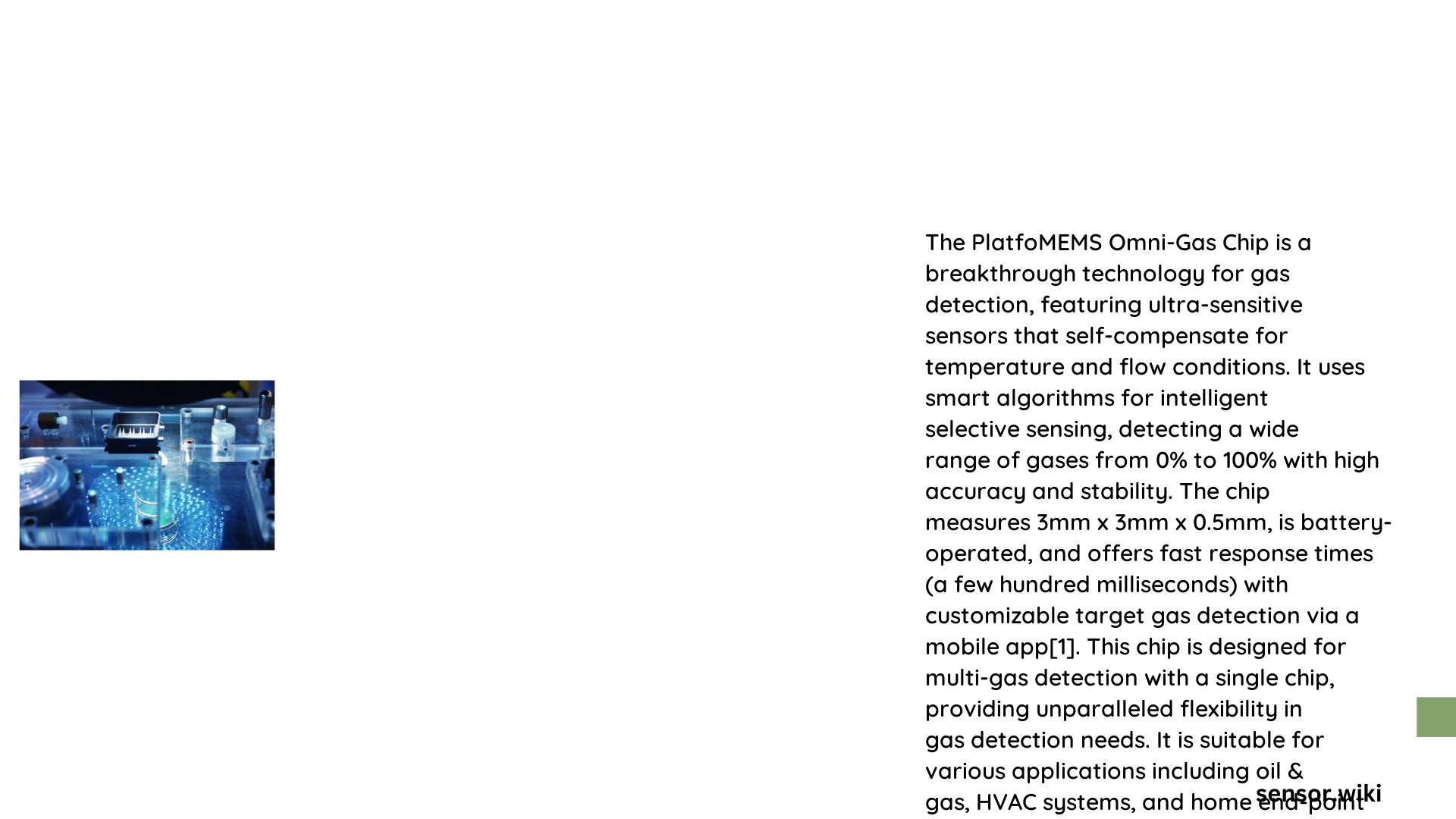Gas detection sensor chips represent sophisticated electronic components designed to identify and measure various gaseous compounds with exceptional precision and reliability. These miniature technological marvels enable critical monitoring across industrial, residential, and environmental applications, transforming how we detect and respond to potential gas-related risks and environmental conditions.
What Are Gas Detection Sensor Chips?
Gas detection sensor chips are specialized microelectronic devices engineered to detect, measure, and analyze specific gas concentrations in diverse environments. These advanced semiconductor technologies leverage unique sensing mechanisms to convert gas molecule interactions into measurable electrical signals.
Key Components of Gas Detection Sensor Chips
| Component | Function | Significance |
|---|---|---|
| Sensing Element | Detects gas molecules | Primary detection mechanism |
| Signal Conditioning Circuit | Processes raw sensor data | Enhances accuracy and reliability |
| Communication Interface | Transmits sensor readings | Enables integration with external systems |
How Do Different Gas Detection Sensor Chips Perform?

Bosch BME688: Versatile Sensing Technology
The BME688 represents a pinnacle of gas detection sensor chip technology, offering remarkable capabilities:
- Sensitivity Range: Detects VOCs, sulfur compounds, and gases in parts per billion
- Response Time: Less than 1 second for new sensor readings
- Power Consumption: Ultra-low power modes ranging from 2.1 µA to 3.9 mA
- Operating Temperature: -40°C to 85°C
Key Applications
- Smart home devices
- IoT environmental monitoring
- Wearable technology
- Air quality tracking
Figaro TGS Series: Specialized Gas Detection
Figaro’s sensor chips like TGS2610 and TGS2611 specialize in specific gas detection:
- TGS2610
- Detects LP gas (propane and butane)
- Range: 1-25% Lower Explosive Limit
-
Ideal for domestic gas leak detection
-
TGS2611
- Focuses on methane detection
- Range: 500-10,000 ppm
- Suitable for residential and industrial applications
Sensirion SGP41: Advanced Air Quality Monitoring
The SGP41 offers sophisticated VOC and NOx detection:
- Sensitivity Index: 1-500 points for VOCs and NOx
- Operating Temperature: -20°C to +55°C
- Power Consumption: 3.0 mA at 3.3V
- Communication: Digital I²C interface
What Factors Influence Gas Detection Sensor Chip Performance?
Several critical factors determine the effectiveness of gas detection sensor chips:
- Sensitivity: Ability to detect minute gas concentrations
- Selectivity: Distinguishing between different gas molecules
- Response Time: Speed of detecting gas presence
- Stability: Long-term performance consistency
- Environmental Resilience: Tolerance to temperature and humidity variations
Emerging Trends in Gas Detection Sensor Chip Technology
- Miniaturization of sensing elements
- Enhanced digital signal processing
- Lower power consumption
- Improved multi-gas detection capabilities
- Integration with AI and machine learning algorithms
Challenges and Future Developments
Gas detection sensor chip technologies continue evolving to address:
– Increased accuracy
– Broader detection ranges
– More robust calibration techniques
– Enhanced environmental adaptability
Conclusion
Gas detection sensor chips represent a critical technological frontier, enabling unprecedented environmental monitoring and safety capabilities across multiple domains.
